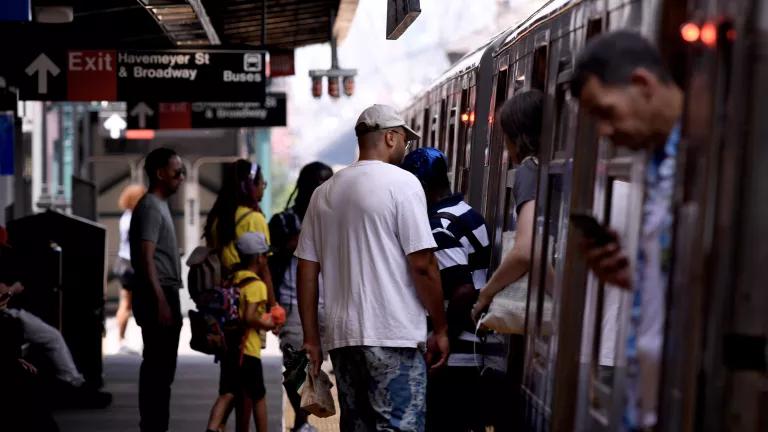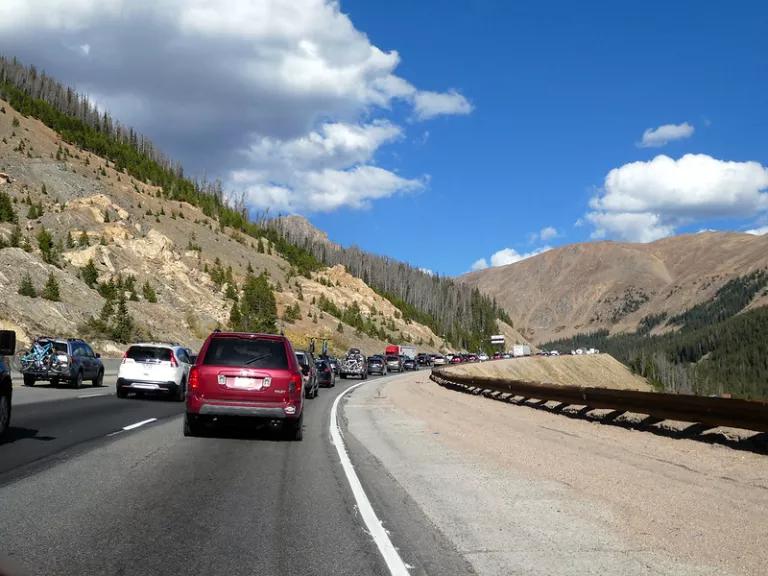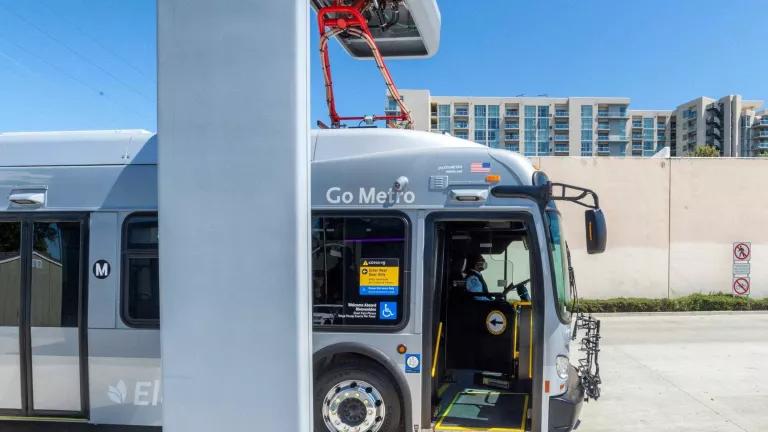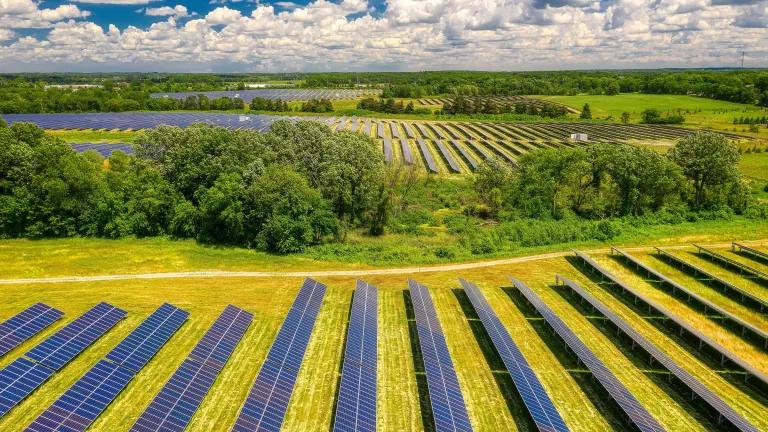The Bipartisan Infrastructure Law at Two: Promise and Predicament
An unprecedented amount of funding is available for clean and equitable transportation. But are states using this money to move the needle on emissions reduction?

Metropolitan Transportation Authority (MTA) via Flickr, CC BY 2.0 DEED
Today marks the two-year anniversary of the single-largest infusion of money for transportation at the federal level. In addition to increasing transportation funding by 50 percent from the last transportation infrastructure bill, the Bipartisan Infrastructure Law created a number of new funding programs for transportation projects that prioritize greenhouse gas emissions reduction and equity.
This landmark law offers an unprecedented opportunity to reimagine and revitalize our transportation system, putting people before pavement. Leaders in the administration and at the U.S. Department of Transportation (DOT) are committed to improving access to clean and affordable transportation for all.
But two years on, the outcomes are mixed. Too many state transportation departments remain wedded to the old way of doing things. Evidence also suggests that not all of the money set aside for climate and equity is actually being spent on projects that will reduce emissions or improve access to reliable transportation options.
The stakes couldn’t be higher. Transportation is now the single-largest source of greenhouse gas emissions in the United States, responsible for 28 percent of total economy-wide emissions. As the climate crisis worsens and historically marginalized communities continue to shoulder the burden of vehicle pollution, addressing emissions from the transportation sector and creating usable transportation systems become all the more urgent. An analysis conducted by the Georgetown Climate Center after the law was signed showed that if highway expansion continues to receive the bulk of federal funding, we will see an increase in emissions in the transportation sector.
Americans are feeling the impacts of rising emissions
The Fifth National Climate Assessment, released this week, paints a dire picture of the state of the fight against rising emissions. Total emissions continue to rise, as does the frequency of extreme weather events, days with warmer-than-average temperatures, and heat waves. The assessment notes that 2023 was a record year for the number of climate disasters that cost more than $1 billion in damage and economic losses.
On the transportation front, emissions have rebounded to pre-COVID 19 pandemic levels, and they are forecast to remain in line with today’s levels for decades to come. As a result, transportation assets run a greater risk of being negatively impacted by adverse weather and climate-related natural disasters, such as hurricanes, wildfires, and winter storms.
In response, the National Climate Assessment report emphasizes that the creation of carbon-free transportation systems would not only lead to emissions reductions but would also boost economic development; promote social equity; and lead to societal benefits, including improved air quality, human health, and safety.

Bruce Fingerhood via Flickr, CC BY-NC 2.0 DEED
Some progress, but many states are doing more of the same
So where do things stand on climate and equity after two years of the Bipartisan Infrastructure Law? So far, $256 billion in infrastructure funding has already been awarded to states, cities, counties, transit agencies, tribes, and other entities for transportation projects.
The DOT is using the authority laid out in the Bipartisan Infrastructure Law to administer many innovative programs. Among the highlights of the bill are the Carbon Reduction Program, which provides $6.4 billion in funding for states to reduce transportation emissions and create transportation carbon reduction plans, and the RAISE grants, which support the construction and repair of our transportation networks in a sustainable and equitable way. In its first year, the Reconnecting Communities and Neighborhoods program funded projects in 45 communities to the tune of $185 million to foster community connectivity by improving transportation. Funds from this program will support such efforts as those by the New Jersey Transit Corporation to build a pedestrian tunnel for easier access to the Long Branch train station, providing residents with safer and more reliable public transit. The Safe Streets and Roads for All program funded $800 million of road projects in 2022 that improve safety for drivers, pedestrians, cyclists, and transit riders. The Mid-Ohio Regional Planning Commission was awarded a grant to create a safety action plan for the Columbus area as well as a smaller grant to address the frequency of traffic accidents on Livingston Avenue, an area divided by highway construction in the 1930s.
However, the overwhelming amount of transportation funding continues to be distributed through older, formula programs, such as the National Highway Performance Program and the Surface Transportation Block Grants. While Congress gave states the authority to spend these so-called formula funds on public transit projects, vehicle charging, and even pedestrian and bike infrastructure, there is no easy way to track exactly how this money is being spent, and too many states continue to funnel the lion’s share of these funds into highway expansion projects.
Moreover, states are using flexibilities in the requirements for climate funding to spend even more on car-centric highway projects, negating the potential societal and environmental benefits of those programs. As of September, $755 million in climate and transportation funding was transferred out of the Carbon Reduction Program to general highway accounts in a number of states to fund things like highway expansions and other road projects. With data on state spending being hard to come by, the full impact of this landmark bill remains somewhat of a black box.
Money must flow to low-carbon transportation
The good news is that there’s still time to correct course. More than half of the transportation funding hasn’t been distributed yet, so states can pivot toward investments in low-carbon transportation options. A new NRDC report sheds some light on how states are spending federal funding and provides guidance on critical policies to reduce transportation emissions in an equitable way. Getting Transportation Right: Ranking the States in Light of New Federal Funding rates states on 22 metrics to evaluate their progress on equity and climate outcomes in transportation. This includes metrics related to state planning for climate and equity, vehicle electrification, expansion of transportation choices, system maintenance, and procurement; effectively, it provides states with a comprehensive list of best practices they can use to leverage federal transportation dollars with demonstrated climate and equity outcomes.
If state leaders look at these categories and act on them, the Bipartisan Infrastructure Law can achieve its purpose and put our nation on the path to a cleaner, more equitable transportation system.



